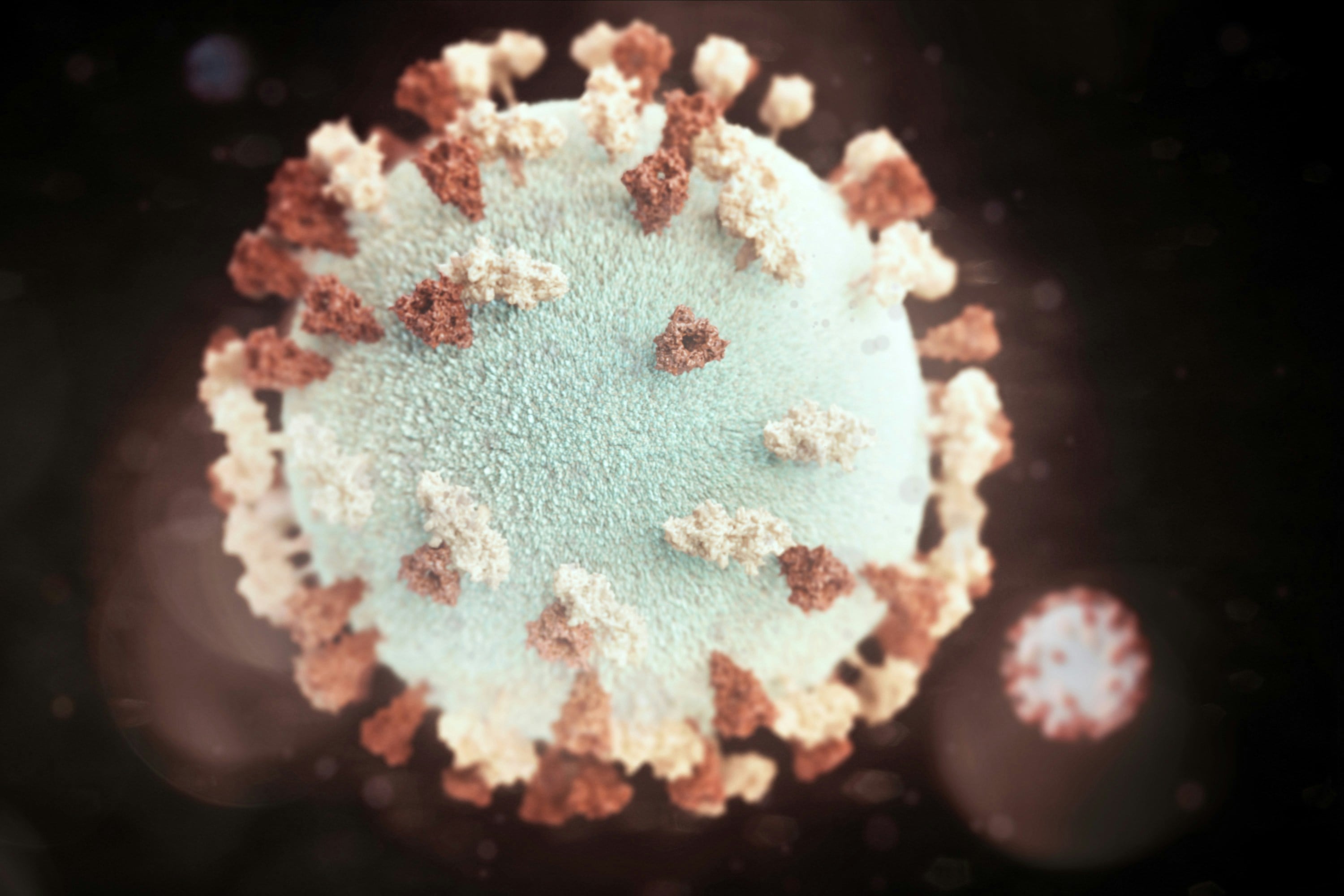Airborne Viruses: The Routes, Types, and Preventions

Infections and diseases can be transmitted in three main ways: person-to-person, surface-to-person, and air-to-person. In this guide, we focus on how infections are transmitted through air to person. From understanding what an airborne disease is, the routes of transmission, and how to prevent airborne infections in your space, this comprehensive guide tells you everything you need to know about airborne viruses and infections.
● What is an Airborne Disease?
● Routes of Transmission for Airborne Infections
● Types of Airborne Infections
● Prevention Techniques to Reduce Airborne Diseases
What is an Airborne Disease?
An airborne disease is a form of infection that is primarily transmitted through the air. The infectious agents from the disease are expelled from an infected person through respiratory droplets when they talk, cough, or sneeze. These droplets can remain active for hours and can travel distances further than 6 feet depending on certain factors, including:
● Temperature: This would depend on the disease, as viruses thrive in the cold, whereas bacteria spread more easily in the summer.
● Sunshine: The amount of sunshine can determine the transmission of airborne diseases, as the more UV rays there are, the more likely viruses and bacteria are harmed.
● Air Currents: If it is particularly windy one day, the spread of an airborne disease may be further.
● Weight of Particles: Droplets that are larger in size may have trouble travelling as far as they take longer to settle.
Routes of Transmission for Airborne Infections
There are two forms of airborne transmission: short-range and long-range. Short-range transmission is where there is only a short distance between an infected person and a susceptible host. Transmission in this situation occurs when an infected person exhales, releasing respiratory droplets, and the susceptible host inhales these droplets directly within this short distance.
Long-range transmission is the more common form of airborne transmission. This is where smaller droplets are expelled into the air. As the droplets are smaller, they evaporate quicker and are carried by air currents more easily. This means these airborne infections can infect people further away as the infectious agents travel further.
Types of Airborne Infections
You have probably come across airborne disease before without fully knowing it. For example, the common cold or the flu are common airborne diseases. During cold and flu season, the cold and flu spread rapidly through respiratory droplets, which is how so many people contract the infection each year.
Less common types of airborne infections include Mumps and Measles. These are very contagious diseases that can remain active in the air for a number of hours. This shows the severity of airborne infections depends on the type of pathogen. It is, therefore, important to take preventative actions to reduce the amount of pathogens in the air.
Other types of airborne infections include:
● Chickenpox/shingles
● Whooping Cough
● Tuberculosis (TB)
● Respiratory Syncytial Virus (RSV)
Prevention Techniques to Reduce Airborne Diseases
To prevent contracting airborne diseases, you could implement some of these simple techniques, including:
Coughing and Sneezing Into Your Elbow
This tip is probably the most frequently emphasised. It is crucial you cough or sneeze into your elbow or a tissue to stop the spread of infectious agents. By avoiding coughing or sneezing into your hands, you can minimise the risk of sneezing and then touching surfaces that would spread pathogens.
Additionally, coughing or sneezing and not covering your face at all is also harmful as this aids the spread of infections through the air. By openly sneezing, you are expelling infectious agents into the air, which can then be carried away by air currents, spreading the infection further.
Washing Your Hands Frequently
Another tip is to wash your hands frequently. You may think you don’t need to wash your hands to prevent contracting airborne diseases as they are transmitted through the air, but this isn’t the case. Although airborne infections travel through the air, they can still land on surfaces. This means if you touch an infected surface, you can still contract the disease, so it is important you wash your hands with antibacterial and antiviral hand soap frequently to avoid this.
Cleaning Common Surfaces
Additionally, by cleaning surfaces frequently, you can rest assured that there is less chance of coming across pathogens. Common surfaces are typically places such as door handles, communal tables, and handrails. You should frequently clean these areas with cleaning products that have the ability to kill harmful bacteria and viruses.
Ensuring Good Ventilation
As these infections are primarily airborne, it is vital you maintain good ventilation in all areas. This can reduce the amount of infectious agents in an area air currents will carry them elsewhere, leaving you with cleaner air. You can also purchase air purifiers that will remove pathogens from the air, providing you with pathogen-free air in places where you may not be able to have good ventilation.
Wearing a Face Mask
A face mask can prevent you from contracting airborne diseases as your face is covered from inhaling possible infectious agents. This can be a particularly useful tool if you want to be around others that have less serious airborne illnesses, such as the common cold or flu, but you still want to socialise with them. This allows both parties to socialise whilst still maintaining a barrier between the infected and the susceptible hosts, preventing the spread of airborne diseases.
Protect Yourself From Airborne Diseases With Woosh
At Woosh Washrooms, we offer a range of products to keep your spaces clean and hygienic. From air purifiers to remove airborne diseases to hand soap so you can wash your hands frequently, we have all the tools you need to protect yourself from airborne diseases. Get in touch today to find out how Woosh Washrooms can enhance your facilities.
Related Articles
33 Facts About Sneezes: The Ultimate Sneeze Guide
What Does an Air Purifier Actually Do?
How to Improve Office Air Quality

